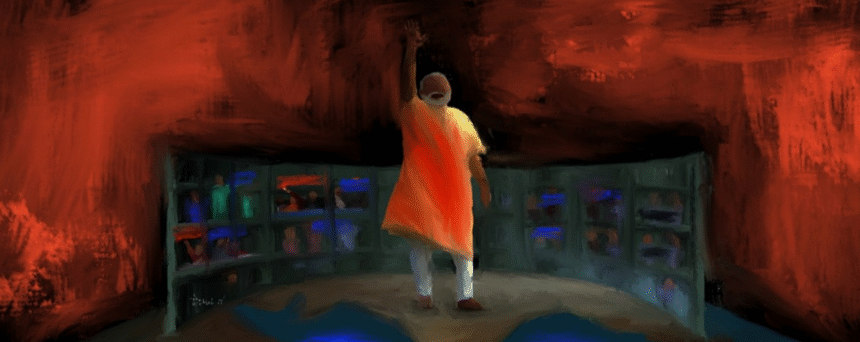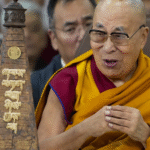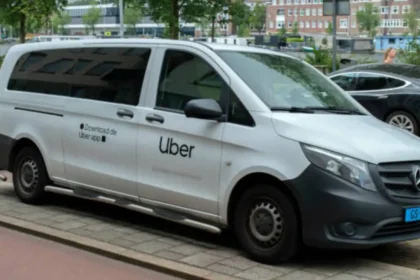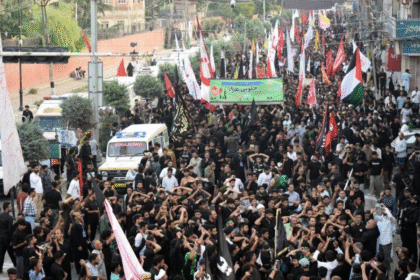Modi’s Political Evolution Traced Over 20 Years in New Book on Power Consolidation in India
Modi’s political evolution traced over 20 years in new book on power consolidation in India, offering a detailed account of institutional and leadership shifts.
A new book by veteran journalist Prem Shankar Jha details how Indian democracy was broken over the decades.
The following are excerpts from The Dismantling of India’s Democracy: 1947 to 2025 by Prem Shankar Jha; reproduced with permission from the publisher, Speaking Tiger.
Over the decade since Narendra Modi has been the prime minister of India, at the head of a BJP government supported by a few local allies in the states of northern India, he has worked diligently to complete the conversion of India into a fascist nation-state—a process that began during his tenure as chief minister of Gujarat in 2002.
The history of this transformation has been written in painstaking detail by scores of academics, journalists and defenders of civil rights and democracy, several of whom have been languishing in prison without bail, but also without having been charged with any specific crime, for years. How Modi has completed the journey to fascism is described in broad brush strokes below:
‘The Dismantling of India’s Democracy 1947 To 2025,’ Prem Shankar Jha, Speaking Tiger, 2025.
Modi took the first step towards dismantling the pluralist, ethnically diverse democracy that his predecessor, Atal Bihari Vajpayee, had taken so much pride in, within weeks of coming to power. His first step in this direction was seemingly innocuous: this was to instal TV cameras at the entrance to every ministry, and withdraw the PIB (Press Information Bureau) card which allowed special correspondents and other senior journalists to visit ministries and talk to civil servants without having to reveal their own, or their hosts’, identity.
The PIB card had been created deliberately by India’s first prime minister, Pandit Jawaharlal Nehru, to encourage public debate within an infant democracy by allowing senior journalists to explore different views on impending policy decisions within the government, at a time when there was virtually no opposition to the Congress in parliament. The Modi government destroyed this freedom barely a fortnight after it came to power. A further amendment during his second term, that required the officer to also come to the reception desk and sign his or her visitor in, ended all communication between government and the public except what Modi wanted the latter to hear.
Modi’s second step towards the centralisation of power was to create a system of monthly meetings between his departmental ministers and senior officers, and nominees of the BJP, in which the party would ‘oversee’ the functioning of the ministry. This transferred much of the decision-making power of government from the ministries to the party.
Modi’s next target was the audio-visual media, which he tamed by using every instrument at his command, from the denial of advertisements to selected print and TV channels, to the framing of never-proved charges of tax evasion and money laundering against their promoters, under which it ‘attached’ (seized) their passports, and all their property till as long as the case lasted. Prannoy and Radhika Roy, the founders of NDTV, India’s first commercial TV channel, were his first targets. Despite this, NDTV retained its independence till November 2022, but succumbed because by then all advertisers had deserted it, presumably under government pressure. Faced with imminent bankruptcy and the loss of the hundreds of jobs of its technical staff, the Roys resigned from the board of the company in November 2022, and allowed NDTV to be purchased by the Adani Group, Modi’s principal financial supporters ever since his days in Gujarat. Since then, NDTV too has become a mouthpiece of Modi’s budding fascist regime.
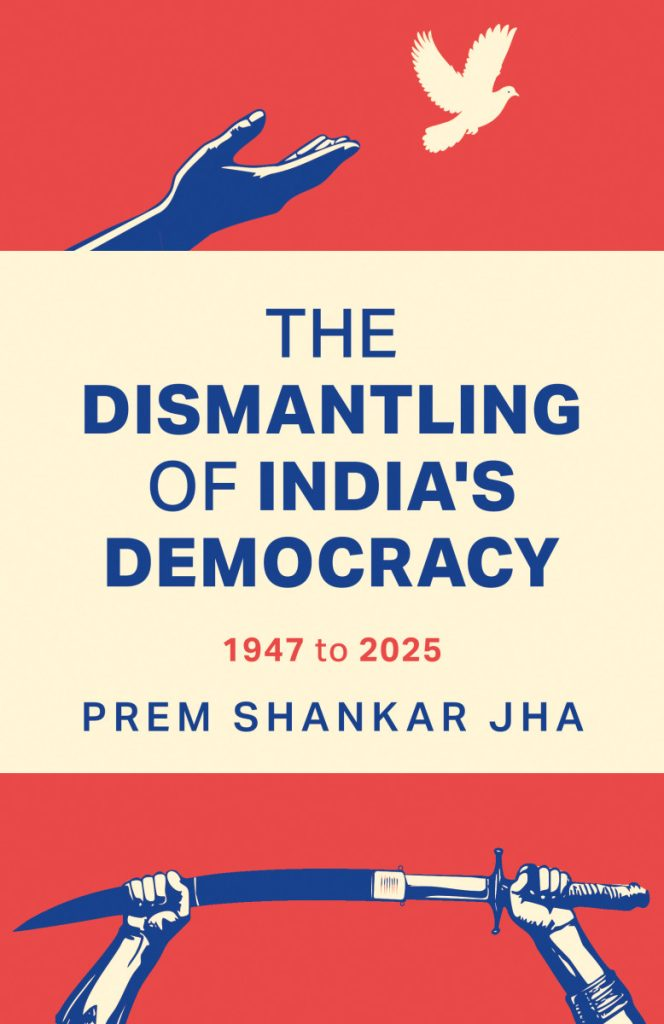
Modi’s third target was the judiciary, which he corrupted through the offer of lucrative post-retirement appointments to High Court and Supreme Court judges. These ranged from the unprecedented appointment of a former chief justice of the Supreme Court of India, P. Sathasivam, to the governorship of Kerala, which we discussed in Chapter 12, to the appointment of former Supreme Court judge A.M. Khanwilkar to the post of India’s Lokpal, its chief vigilance officer. Other judges of the Supreme Court whom Modi similarly rewarded with post-retirement elevations and appointments are Chief Justices of the Supreme Court Ranjan Gogoi and Sharad Bobde, and Justice Arun Mishra.
Modi also made three other, more insidious and—over the long run—even more destructive moves, one deliberate and two defined by sustained avoidance. But all were expressly designed to undermine India’s infinitely varied ethno-national, federal democracy. The first was that in all his years in power, Modi never held a single press conference. The second was that in those years, Modi also never held a meeting of the National Development Council, a council of state chief ministers that had become the main forum for coordinating central and state policies after the Congress lost its dominant party status in 1989. During Modi’s decade, communication between the people and their government, and between the central and state governments on policy issues became strictly one-way.
But his most insidious assault on India’s federal structure was his replacement of the Planning Commission with the NITI (National Institution for Transforming India) Aayog. On the face of it, nothing changed: NITI Aayog continued to work from the same building as the Planning Commission; none of its staff were dismissed and no new staff was added. The change of name therefore looked like no more than another, petty, manifestation of the BJP’s obsession with ‘Hinduizing’ India.
Beneath that deceptively innocuous change, however, Modi took away the Planning Commission’s most important function, and vested it in himself. This was the annual allocation of central Plan grants to the state governments. Till he came to power, this had been done by the Planning Commission on the basis of the oft-revised Gadgil formula for allocation based on factors like population, per capita income, and fiscal performance, aiming to promote balanced regional development, recommended five decades earlier by D.R. Gadgil, then deputy chairman of the Commission. Modi turned this allocation into his personal prerogative, and began lavishing the lion’s share of these grants upon BJP-ruled state governments, at the expense of states in which the BJP had been unable to extend its influence.
From Pluralism to Centralised Authority
The narrative of Indian democracy, built on a complex fabric of pluralism, federalism, and institutional independence, has undergone a stark transformation in the decade since Prime Minister Narendra Modi assumed power in 2014. As documented in Prem Shankar Jha’s 2025 publication, The Dismantling of India’s Democracy: 1947 to 2025, this shift has not been sudden but rather a methodical, multi-pronged recalibration of governance, media, judiciary, and civil liberty. Jha outlines, with evidence and precision, the erosion of constitutional values and democratic institutions, depicting a political journey defined by authoritarian tendencies and the consolidation of control.
Modi’s Ascendancy and the Genesis of Centralisation
Narendra Modi’s arrival at the national stage, after his controversial tenure as Gujarat’s Chief Minister—most notably in 2002—heralded a new political culture. Unlike his predecessor Atal Bihari Vajpayee, who upheld the spirit of inclusive governance, Modi’s approach was anchored in narrative control, institutional consolidation, and the minimisation of dissent. Jha identifies Modi’s first administrative move post-2014 as both symbolic and strategic: the installation of CCTV surveillance at ministry entrances, paired with the withdrawal of PIB (Press Information Bureau) cards from journalists.
This seemingly minor change reversed a long-standing Nehruvian commitment to transparency and open debate. The PIB card, instituted by Prime Minister Nehru, enabled senior journalists to interact freely with civil servants and gather diverse policy perspectives, thereby nurturing democratic discourse. Modi’s move, executed within a fortnight of taking office, ended this tradition. Later amendments made it mandatory for civil servants to officially register and accompany journalists—effectively freezing unsanctioned communication between the state and the press.
Party Oversight and Ministerial Autonomy Diminished
Centralisation of power was further institutionalised through the creation of structured monthly meetings that included departmental ministers, bureaucrats, and BJP nominees. While cloaked as collaborative governance, these meetings shifted the decision-making nucleus away from ministerial offices and into the party’s command structure. Policy inputs, approvals, and execution began reflecting partisan alignment more than administrative logic.
This subtle re-engineering of administrative procedures signified a historic alteration: for the first time since Independence, ministries functioned under the operational influence of a political party rather than a neutral civil service apparatus.
Media Control: Silencing the Fourth Estate
Jha devotes particular attention to how Modi targeted the media, especially visual media, deploying both overt and covert methods. From strategic denial of government advertisements to news channels, to the initiation of tax evasion and money laundering investigations against media owners, the spectrum of coercion was broad. The first high-profile target was NDTV, founded by Prannoy and Radhika Roy—India’s pioneering private television news outlet.
Despite resisting pressures for years, NDTV succumbed in 2022, financially weakened by an advertising boycott allegedly orchestrated through governmental influence. With the Roys’ exit from the board and the acquisition of NDTV by the Adani Group—long seen as Modi’s close allies—the platform lost its editorial independence. NDTV’s transformation into a pro-government outlet symbolised the comprehensive taming of the television news ecosystem.
Undermining Judicial Autonomy
The judiciary, historically a bulwark against executive overreach, was not immune to Modi’s centralising tactics. The prime minister offered prestigious post-retirement roles to judges—a practice not new, but unprecedented in scope and frequency under his regime. Prem Shankar Jha cites the appointment of former Chief Justice P. Sathasivam as the Governor of Kerala as the first major deviation from judicial independence. It was followed by similarly controversial appointments of Justice A.M. Khanwilkar as India’s Lokpal and others including Ranjan Gogoi and Sharad Bobde to various positions.
This practice bred a new culture of incentivised silence. The anticipation of post-retirement benefits began to influence judgments, reducing judicial courage and increasing judicial complicity.
Institutional Apathy and Strategic Avoidance
Even more alarming, according to Jha, were Modi’s deliberate omissions. Over his decade in office, Modi never once held a press conference. This refusal to engage with the press curtailed transparency, denied the public unscripted answers, and reduced the role of media to passive receivers of state-mandated information.
Equally troubling was his consistent avoidance of convening the National Development Council (NDC). Traditionally a cooperative federal forum where state chief ministers engaged with the central government, the NDC became dormant under Modi. This move deepened the Centre’s control, marginalised state leaders, and effectively ended a key mechanism of federal dialogue.
The Dismantling of the Planning Commission: A Tactical Rebranding
Modi’s abolition of the Planning Commission in favour of the NITI Aayog appeared cosmetic on the surface. Both bodies functioned from the same office with largely the same staff. Yet the transition masked a crucial structural change. The Planning Commission, under the Gadgil formula, had the power to allocate central plan grants to states based on objective socio-economic criteria like population, poverty level, and performance.
The NITI Aayog, by contrast, was a toothless think tank. Its policy role was consultative, and the power of fund allocation was centralised in the Prime Minister’s Office. In essence, Modi seized direct control of financial flows to the states. Consequently, BJP-ruled states received disproportionate funding, while opposition-led states faced fiscal discrimination. This move undermined cooperative federalism and turned developmental funds into instruments of political reward and punishment.
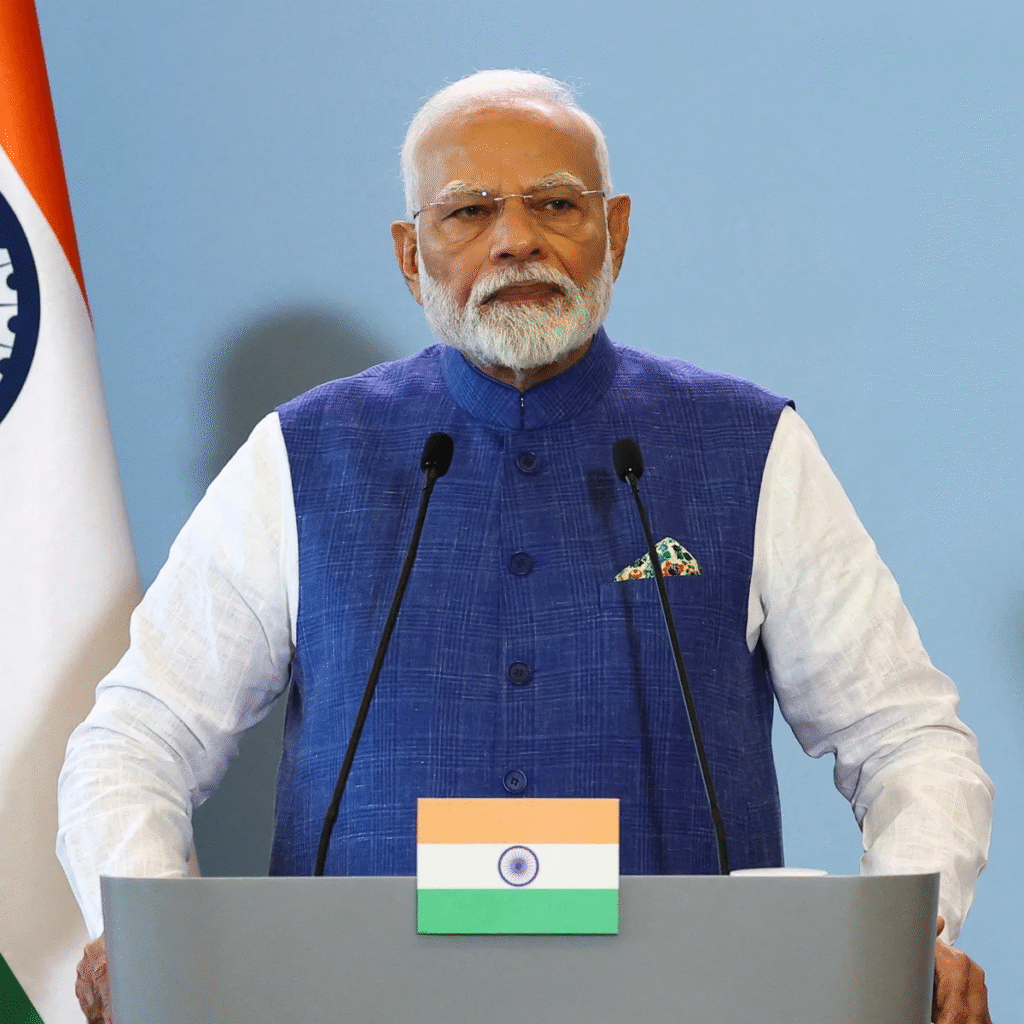
Erosion of Civil Liberties: Targeting Dissenters and Activists
The dismantling of Indian democracy, as per Jha’s analysis, did not rely solely on institutional re-engineering. Equally potent was the silencing of dissent through systematic intimidation of civil society activists, intellectuals, students, and human rights defenders. A growing number of individuals have been imprisoned without formal charges or bail under draconian laws such as the Unlawful Activities (Prevention) Act (UAPA).
The incarceration of figures like Stan Swamy, Anand Teltumbde, Sudha Bharadwaj, and Gautam Navlakha under the Bhima Koregaon case exemplifies this broader assault. These individuals, many of whom were defenders of tribal rights, civil liberties, and constitutional values, were labelled as threats to national security without substantiated evidence.
Criminalisation of Dissent Through Legal Instruments
The Modi administration has strategically weaponised legal institutions to criminalise dissent. Charges of sedition, conspiracy, and incitement have been routinely filed against students, journalists, and opposition politicians. Investigative agencies such as the Enforcement Directorate (ED), Central Bureau of Investigation (CBI), and Income Tax Department have been deployed with an intensity never seen before to harass and intimidate critics.
Jha underlines the pattern of pre-trial detention, media trials, and indefinite legal delays as tools to suppress opposition without formal convictions. These techniques erode democratic safeguards by bypassing due process while sending a chilling message to prospective dissenters.
Surveillance and Digital Suppression
A hallmark of Modi’s administration has been its embrace of digital surveillance. Revelations about the use of Israeli spyware Pegasus to target journalists, opposition leaders, and activists marked a watershed moment. Though the government refused to confirm or deny its involvement, forensic reports linked Pegasus infections to numerous critics of the government.
This environment of surveillance, paired with increasing internet shutdowns in politically sensitive regions such as Kashmir, contributes to what Jha terms a ‘climate of informational suppression’—where data flow, journalistic investigation, and public discourse are carefully monitored or manipulated.
The Strategic Marginalisation of Minorities
While Modi’s centralising reforms affected every citizen, India’s religious and ethnic minorities bore a disproportionate brunt. From the controversial revocation of Article 370 in Jammu and Kashmir to the passage of the Citizenship Amendment Act (CAA), the government undertook a range of initiatives perceived as exclusionary and majoritarian.
The large-scale protests that followed, particularly those led by Muslim women in Shaheen Bagh, were met with harsh police crackdowns, internet shutdowns, and arrests. Delhi’s 2020 riots, which followed inflammatory political rhetoric, resulted in significant minority casualties, deepening communal divides.
Democratic Decline in Global Indices
Under Modi’s leadership, India has steadily slipped in global democracy and press freedom rankings. In reports by institutions such as Freedom House and Reporters Without Borders, India is no longer listed as a full democracy but as an ‘electoral autocracy’ or ‘partly free’ state. Jha treats these rankings not as isolated statistics, but as symptomatic of a deeper democratic recession.
A Future at Crossroads
As India approaches the centenary of its independence, Prem Shankar Jha’s book offers a sobering account of democratic backsliding under Narendra Modi. The journey described—marked by centralised governance, institutional capture, judicial compromise, media subjugation, and civil rights violations—poses existential questions about the nature of India’s republic.
While the democratic spirit persists in civil resistance, opposition mobilisation, and the resilience of grassroots movements, the structural damage done over the past decade presents formidable challenges.
The Rise of Resistance Movements: Civil Society Strikes Back
Despite the widespread institutional erosion under the Modi administration, India has witnessed the emergence of powerful grassroots resistance movements that challenge authoritarian drift. One of the most significant was the anti-CAA (Citizenship Amendment Act) movement. Initiated by students and later sustained by thousands of citizens—especially Muslim women—this movement saw peaceful sit-ins, marches, and legal challenges. The Shaheen Bagh protest in Delhi became a national symbol of dissent.
Civil society organisations, student unions, women’s groups, and Dalit-Bahujan networks coalesced into an ecosystem of resistance. Their digital presence bypassed mainstream media blackouts and offered a counter-narrative to state propaganda. These acts of protest defied repression through creativity, nonviolence, and constitutionalism.
Farmers’ Protest: A Nationwide Show of Democratic Resilience
Another major blow to Modi’s centralisation came from India’s farmers. In late 2020, hundreds of thousands of farmers—mainly from Punjab, Haryana, and Uttar Pradesh—mobilised against three controversial farm laws perceived to deregulate agriculture in favour of corporates. The year-long protest included months-long sit-ins at Delhi’s borders, nationwide strikes, and international solidarity.
What set the farmers’ movement apart was its scale, organisation, and refusal to submit despite extreme weather, police blockades, misinformation campaigns, and political pressure. In November 2021, after months of deadlock, Modi announced the repeal of the farm laws—marking the first significant policy reversal under his regime.
Political Opposition: Challenges and Reconfigurations
India’s political opposition, weakened and fragmented for years, began showing signs of revival amid democratic decline. While the Indian National Congress struggled with leadership and organisational crises, regional parties like the Trinamool Congress (TMC), Aam Aadmi Party (AAP), Samajwadi Party (SP), and Dravida Munnetra Kazhagam (DMK) built strong state-level resistance.
Electoral setbacks for BJP in states like West Bengal (2021) and Himachal Pradesh (2022) revealed that Modi’s national dominance was not invincible. The Bharat Jodo Yatra led by Rahul Gandhi in 2022-2023 re-energised public discourse around unity, secularism, and democratic values, though its long-term impact remains debated.
Efforts at opposition unity gained momentum ahead of the 2024 general elections. The INDIA (Indian National Developmental Inclusive Alliance) coalition attempted to bridge ideological differences to form a united front. However, coordination issues, ego clashes, and BJP’s media dominance limited its electoral impact. Still, the very formation of such a coalition marked an ideological pushback.
Judicial Interventions and Legal Pushbacks
Although judicial independence eroded under political influence, occasional court rulings still provided hope. The Supreme Court’s 2023 verdict striking down the electoral bonds scheme—a financial tool widely criticised for enabling opaque political funding—was hailed as a rare act of institutional courage.
High Courts, too, occasionally intervened to protect individual liberties, quash illegal detentions, and ensure fair trials. Public Interest Litigations (PILs) and independent lawyers continued to challenge arbitrary executive actions, though success was sporadic.
Digital Media, Youth Voices, and Cultural Resistance
With mainstream media largely co-opted, independent digital platforms like The Wire, Scroll, Alt News, Article 14, and NewsLaundry became hubs for investigative journalism and fact-checking. YouTube channels, Instagram activism, and podcasts created alternative circuits of engagement, particularly among urban youth.
Satirical artists, stand-up comedians, filmmakers, and musicians became powerful voices of resistance. Cultural expressions, from protest poetry to viral short films, served as tools of dissent that bypassed censorship and reinvigorated civic consciousness.

The Role of the Indian Diaspora and Global Solidarity
Indian diaspora communities, particularly in North America and Europe, played a significant role in amplifying democratic concerns on international platforms. Protests outside Indian embassies, op-eds in global newspapers, and academic advocacy brought international scrutiny to Modi’s domestic policies.
Global watchdogs and human rights organisations continued to track India’s democratic backsliding, placing pressure on New Delhi during trade negotiations and diplomatic summits. Though the government dismissed these critiques as interference, they highlighted the costs of abandoning democratic norms.
Hope and Hindrances: The Road Ahead
India’s democracy is at a critical juncture. While authoritarian consolidation under Modi has damaged core institutions, resistance continues to evolve. The challenge ahead lies in institutional reconstruction, constitutional renewal, and reclaiming democratic spaces through sustained civic participation.
Prem Shankar Jha concludes that the restoration of democracy will not result from electoral victory alone but from the deeper revival of constitutional morality, secularism, and decentralisation. The spirit of 1947—a republic built on equality and inclusion—must be reimagined in the context of 2025.
Foreign Policy Reimagined: From Non-Alignment to Nationalist Projection
India’s post-independence foreign policy, rooted in non-alignment, moral diplomacy, and regional cooperation, has shifted drastically under Narendra Modi. His approach, characterised by assertive nationalism, strategic realignment, and leader-centric diplomacy, mirrors the centralisation trends within domestic governance.
Modi’s foreign visits were transformed into high-profile global events. From large diaspora rallies in Madison Square Garden to symbolic gestures in Abu Dhabi and Tel Aviv, these spectacles were aimed not just at international audiences but also domestic voters. Foreign policy became a tool of political branding and ideological assertion.
Diaspora as a Political Tool
Under Modi, the Indian diaspora was no longer seen merely as a cultural asset or economic contributor—it became a strategic amplifier of the BJP’s global narrative. Overseas Indian communities were courted aggressively, encouraged to lobby host governments, fund cultural events, and counter criticism of domestic policies.
Diaspora organisations like the Overseas Friends of BJP (OFBJP) became integral to this strategy. They played a crucial role in narrative control, especially during contentious episodes like the CAA-NRC protests and the abrogation of Article 370.
The Strategic Partnership with Authoritarian States
India’s diplomatic reorientation also involved building strong ties with authoritarian regimes, often under the banner of pragmatism. The Modi government deepened its engagement with Israel, Saudi Arabia, Russia, and the UAE. These alliances were marked by defence deals, energy cooperation, and counter-terrorism narratives.
This shift was not inherently undemocratic, but Jha argues it reflected Modi’s comfort with autocratic leadership models. His admiration for strongman figures, and reciprocal appreciation from leaders like Vladimir Putin or Benjamin Netanyahu, signalled ideological affinity beyond geopolitical interest.
Democratic Backsliding and International Image Management
Even as India’s democracy weakened internally, the government projected an image of robust constitutionalism abroad. Lavish global events like the Howdy Modi and Namaste Trump rallies were carefully choreographed to convey popular legitimacy and economic confidence.
However, this image began to erode as international watchdogs, scholars, and media outlets increasingly documented the democratic decline. Reports by Freedom House, the V-Dem Institute, and the UN Human Rights Office highlighted internet shutdowns, suppression of protests, and erosion of press freedom.
In response, Indian embassies and pro-government voices launched counter-narratives, accusing critics of bias, colonial hangover, or ignorance of India’s ‘unique challenges’. This combative diplomacy further alienated human rights bodies and global civil society.
Impact on South Asia: Regional Dominance and Fractured Trust
Modi’s India asserted regional leadership through a doctrine of “neighbourhood first,” yet relations with many neighbours deteriorated. Nepal’s backlash over border disputes, Bangladesh’s growing discomfort with CAA implications, and strained ties with Pakistan after the Balakot strikes illustrated regional fallout.
India’s economic and military power remained unmatched in South Asia, but trust eroded. Smaller nations turned to China and other global powers to balance Indian influence. Within this context, Jha identifies the contradiction: Modi’s nationalist posture isolated India regionally even as it pursued global assertiveness.
Quad, Indo-Pacific, and the Western Embrace
Strategically, India’s growing partnership with the US, Japan, and Australia under the Quadrilateral Security Dialogue (Quad) aimed to counterbalance China’s influence in the Indo-Pacific. The Modi government aligned itself with the West on security and technological cooperation, often downplaying human rights critiques in favour of strategic convergence.
However, this alignment came at a cost. Western democracies faced pressure from their own civil societies to address India’s democratic regression. Congressional hearings in the US, UK Parliament debates, and European Union resolutions highlighted this growing tension between interests and values.
Foreign Policy as a Mirror to Domestic Governance
Jha concludes that Modi’s foreign policy, while tactically sophisticated, reflects the broader trend of centralised leadership, narrative control, and ideological projection. Just as dissent is managed at home, critique is deflected abroad. Just as institutions are overridden domestically, multilateralism is substituted by bilateralism or spectacle.
In doing so, India’s global role has grown in stature but diminished in democratic credibility. The paradox of a rising power with weakening internal democracy poses long-term questions—not just for India’s foreign relations, but for the global democratic order.
Also Read : Government Spends ₹25.2 Crore on ‘Pariksha Pe Charcha’, 2,500% Increase in 6 Years


